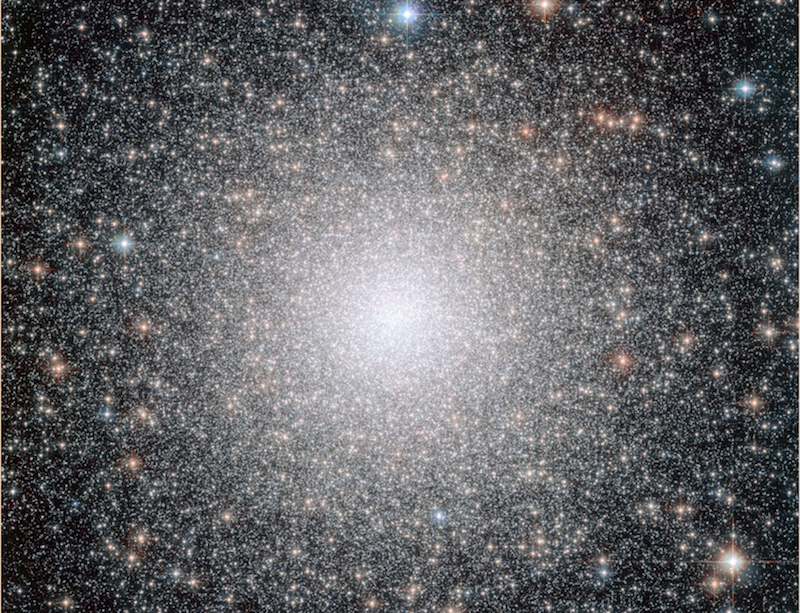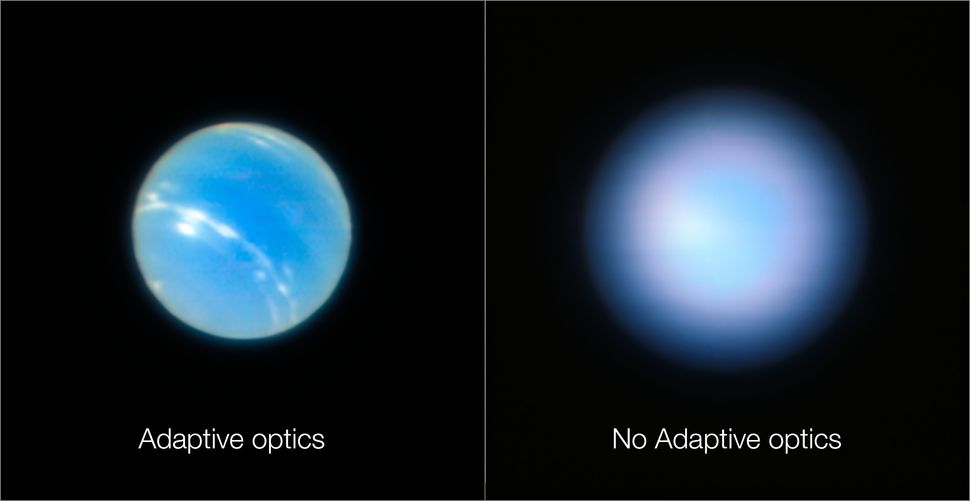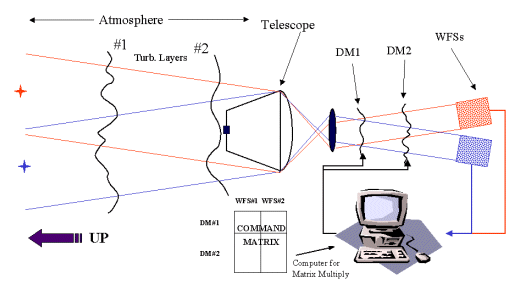
A new adaptive optics system referred to as MAVIS could transform modern ground-based telescopes. Courtesy of MAVIS Blog.
The Very Large Telescope – located in northern Chile- is one of the world’s most advanced optical instruments. The VLT consists of four unit telescopes capable of high-resolution spectroscopy and imaging for radiation in the near-ultraviolet to the mid-infrared range. Separately, each telescope can detect objects four billion times fainter than that what we can see with the human eye. Together, the combination of the four can achieve an angular resolution of .001 arc-second. In this mode of operation the array of unit telescopes forms a giant interferometer.
The Need for Adaptive Optics in Ground-Based Telescopes
Atmospheric turbulence is the most consequential source of distortion in ground-based telescopes. Light from objects in space enters the atmosphere as a plane wave, but variations in the temperature (and therefore refractive indices) cause random phase changes. The resulting image through a land-based telescope is thereby distorted and blurred.
Adaptive optics is a relatively new technology that employs deformable mirrors to reshape the wavefront in real-time. These systems first measure the shape of the wave as a function of position within the telescope’s aperture to create a “map” of aberrations. This information is then delivered to the deformable mirror which shifts its shape to correct the wavefront. The final image can be just as sharp as those obtained in space.

Before and after images of Neptune captured by the ESO’s Very Large Telescope illustrate the remarkable enhancement in astronomical imaging brought by its new adaptive-optics module, enabling unprecedented clarity and detail in space observation. (Credit: ESO/P. Weilbacher (AIP))
Adaptive Optics in the VLT
The VLT is constantly updating its adaptive optics systems. The most recent upgrade is the Ground Atmospheric Layer Adaptive Corrector for Spectroscopic Imaging (GALACSI.) GALACSI uses laser tomography methods to correct atmospheric interference up to one kilometer above the telescope. GALACSI provides huge imaging improvements but its corrections are only valid for small portions of the sky.
A research team at Australian Astronomical Optics (AAO) devised a new plan to overcome this limitation of the VLT. Their proposal entails a Multi-Conjugate Adaptive Optics (MCAO) system that uses a series of deformable mirrors throughout the volume of the telescope to measure light aberrations in multiple directions. The instrument, MCAO Assisted Visible Imager and Spectrograph (MAVIS), could eventually produce images up to three times sharper than the Hubble telescope.

The above diagram shows a basic MCAO technique. MAVIS employs additional deformable mirrors and laser guide stars. Courtesy of MAVIS Blog.
MCAO Assisted Visible Imager and Spectrograph (MAVIS)
MAVIS consists of two main parts: an adaptive optics system and its related post focal instrumentation. The design involves three deformable mirrors, eight wavefront sensors, and five laser guide stars. Using several guide stars would allow MAVIS to use a tomographic reconstruction process that determines the best possible commands for the deformable mirrors.

MAVIS could play a key role in morphology of young galaxies. Courtesy of California Institute of Technology.
The wavefront sensors will point at different areas across the atmosphere to greatly enhance the corrected field of view for the VLT. The AAO team estimates their system could broaden this field about 30 times that of standard adaptive optics systems without sacrificing angular resolution.
As part of their proposal, AAO researchers also include a scientific case for MAVIS – a long list of potential applications and advantages to justify the cost. These studies take special advantage of the large sky coverage and significantly improved image quality. A few key applications include long-term planetary monitoring, precision astrometry, and morphology of young galaxies. In addition, MAVIS could posses such enhanced point-source sensitivity that the VLT could image stellar populations beyond the Milky Way. This could provide information about star clusters that formed 13 billion years ago.
The MAVIS system will make huge improvements to what is already the world’s most powerful ground-based telescope. The dynamic adaptive optics system could completely eliminate atmospheric turbulence distortion while significantly increasing the field of view and maintaining an angular resolution close to the diffraction limit. The 15-month design study begins in February next year while the complete upgraded telescope is expected to be completed in 2025.
For more information, refer to the Mavis Blog detailing the proposal and the future of the VLT.
